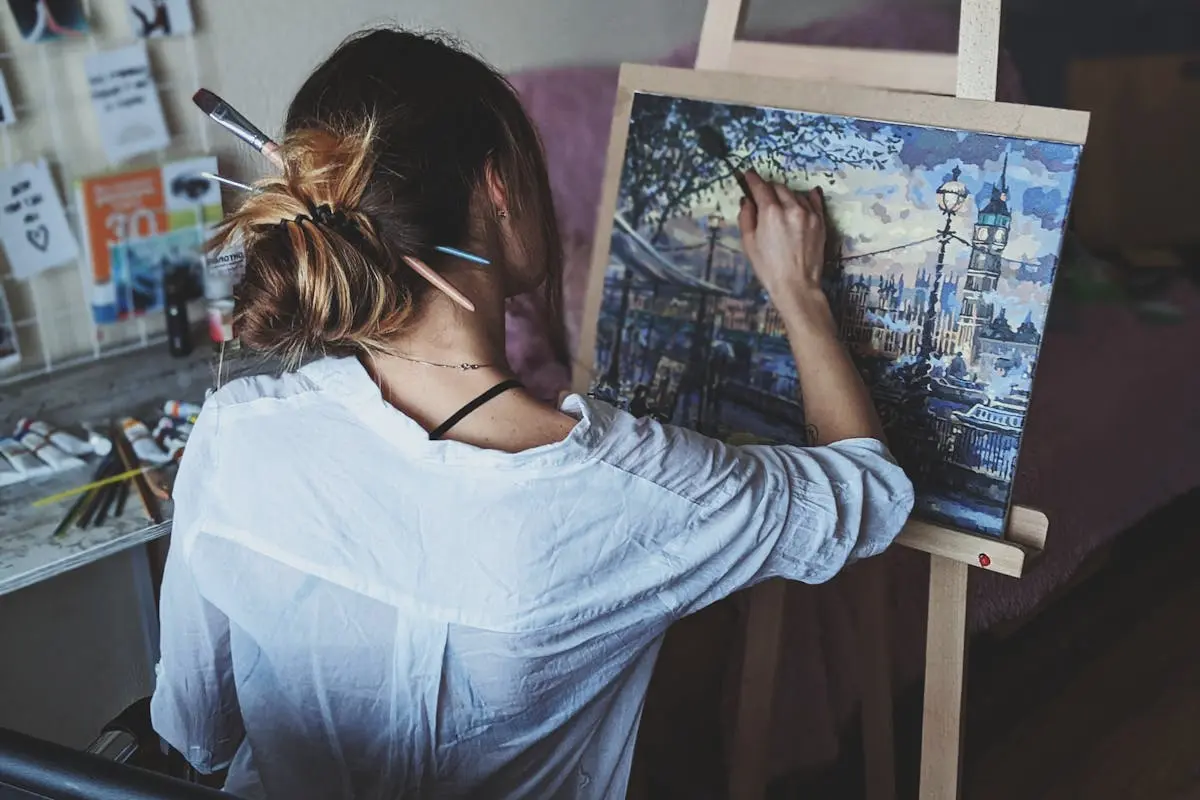For artists, the signature on a piece of artwork is not just a mark of authorship but also a seal of authenticity. Traditionally, signatures are added to the front of a canvas. Now there’s an innovative alternative: laser engraving on the back of Artefex panels. This modern method offers a range of benefits, ensuring that your signature is both discreet and permanent.
Signing Artwork History
During the Renaissance era, signing finished paintings emerged as a common practice, marking a pivotal shift in the art world. This era saw the transition from the co-operative guild system—which adhered to rigid aesthetic rules, as seen in medieval religious icons—to celebrating creative individuality in art.
In Western art history, the Renaissance is renowned for the emergence of distinct styles and preferences among artists. This period gave birth to the unique artistic expressions of masters like Titian, known for his loose, dramatically expressive brushwork that captured movement and grand gestures; Botticelli, with his elegant and soulful compositions; and Caravaggio, famous for his dramatic use of chiaroscuro to play with light and dark.
The artist’s signature became a crucial element during this time, serving as a stamp of authenticity and a declaration of authorship. It was a distinctive mark that not only verified the creator of the piece but also helped to protect the artist’s work from imitators. Thus, signing a painting was a bold affirmation of the artist’s unique vision and craftsmanship.
How and Why to Sign Your Artwork
Why Signing Your Artwork is Important
- Authenticity: A signature authenticates your work and distinguishes it as an original piece.
- Branding: It helps in establishing your identity as an artist. Your signature is part of your brand.
- Value Addition: Signed artworks are often considered more valuable and are preferred by art collectors.
- Historical Record: A signature acts as a time stamp, providing historical context for your artwork.
How to Sign Your Artwork
1. Choosing the Right Location
- Bottom Right Corner: Traditionally, most artists sign their work in the bottom right corner.
- Blending with Composition: Ensure your signature complements the composition and does not distract from the artwork.
- Versatility: Be prepared to adjust the location based on the artwork’s design and orientation.
2. Selecting Signature Style
- Consistency: Keep your signature consistent across all your works to maintain brand identity.
- Readability: Ensure it is legible and clear to avoid any confusion or misidentification.
- Personal Touch: Add a unique element to your signature to make it distinctive.
3. Choosing the Right Medium
- Matching Medium: Use the same type of medium or a compatible one that blends well with your artwork.
- Permanence: Ensure the medium you choose for signing is permanent and will not fade over time.
- Tool Selection: Use fine-tipped pens, brushes, or other tools that allow for precise control.
Best Practices for Signing Your Artwork
- Practice: Practice your signature on a separate surface before signing your artwork to avoid mistakes.
- Documentation: Keep a record of your signed works, including photographs and detailed descriptions.
- Professionalism: Approach signing your artwork with the same level of care and professionalism as creating the artwork itself.
The Benefits of Laser Engraving Your Signature
1. Precision and Detail
Laser engraving provides unmatched precision and detail, making it ideal for intricate signatures. The laser can accurately replicate your unique style, down to the smallest detail. This ensures that every piece of artwork is signed uniformly and professionally.
2. Customization
Each engraving can be customized to your exact preferences. Whether you want to include your name, a date, series number or a specific logo, a laser engraving can accommodate all these details seamlessly. This level of customization is impossible to achieve with a traditional art signature.
3. Durability
One of the significant advantages of laser engraving is its durability. The engraved signature is resistant to wear and tear, ensuring that your mark remains intact for years. Unlike signatures made with paint or ink, it won’t fade or smudge over time and will remain with the art forever.
Why Choose the Back of an Artefex Panel?
1. Aesthetic Cleanliness
Signing the back of the panel keeps the front of your artwork clean and uninterrupted. In addition, this is particularly beneficial for minimalist or abstract pieces because a visible signature can detract from the overall aesthetic.
2. Protection from Tampering
An engraved signature on the back of the panel deters tampering or forging. It adds an extra layer of security, ensuring the authentication and protection of your work.
3. Professional Presentation
Laser engraving offers a professional and polished appearance, which can enhance the overall value of your artwork. Collectors and galleries often appreciate the discreet, yet permanent, nature of an engraved signature.
Elevating Your Art with Engraving
Signing your artwork using laser engraving on the back of an Artefex panel is an innovative way to combine modern technology with traditional signatures. This method offers precision, durability, and a clean aesthetic, making it an excellent choice for contemporary artists. By embracing this technique, you can ensure that your signature remains a permanent and integral part of your artwork, enhancing its authenticity and value.
Check out Art League. and the Draw Paint Academy the for some more tips on signing your paintings.




